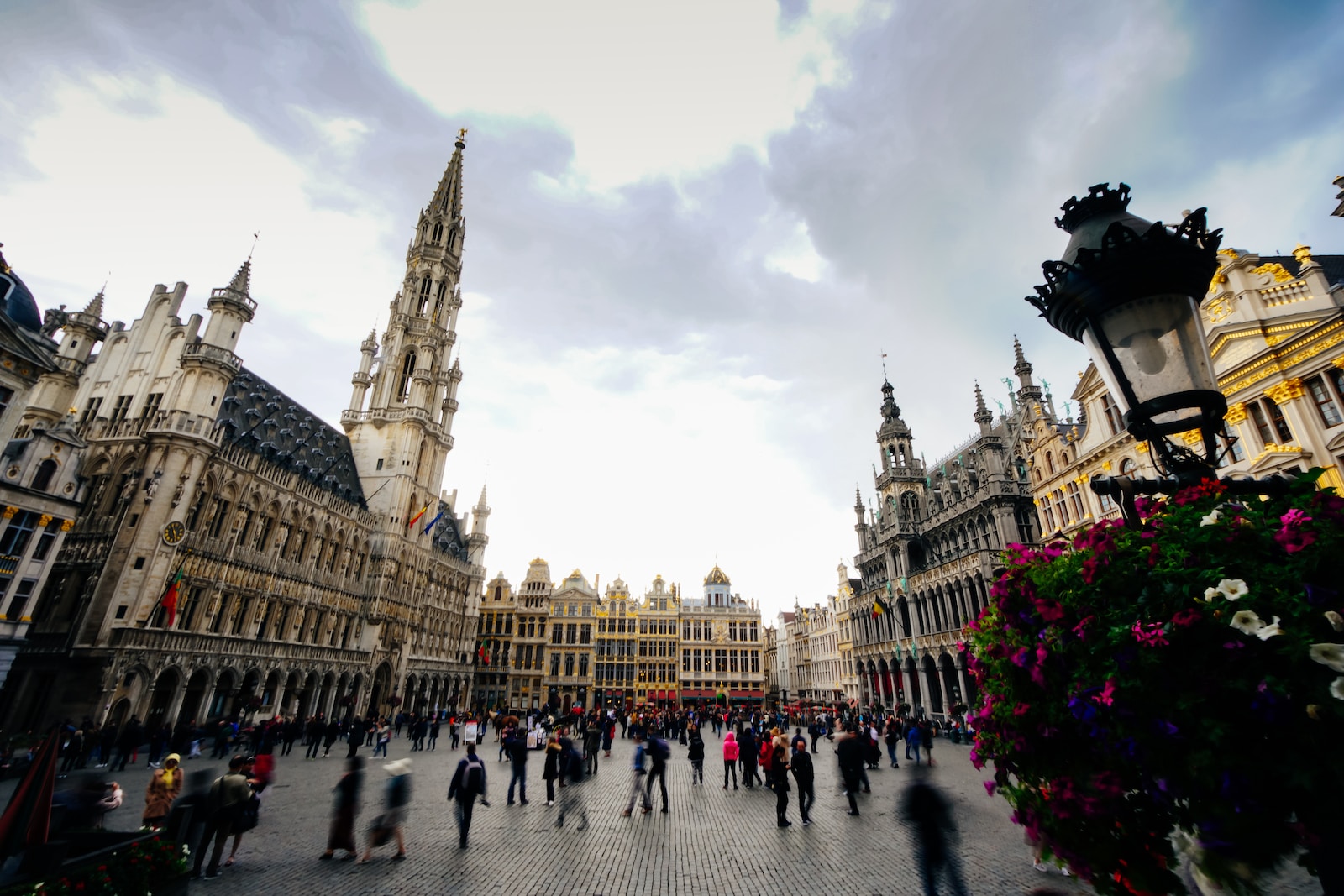The Grand Place in Brussels is an awe-inspiring collection of buildings both private, that primarily date back to the late 17th century. It forms a marketplace with charming cobblestone streets and its origins can be traced back as far as the 12th century.
The Grand Place showcases structures that symbolize the city’s authority and guilds. This architectural masterpiece beautifully combines artistic styles from Western culture creating a harmonious blend that reflects the vibrant essence of this important political and commercial hub.
A brief count of its History
A brief glance into its history reveals a story about Brussels as a prosperous trading city in Northern Europe. Despite enduring bombardment by Louis XIV’s troops in 1695 Brussels managed to rise from the ashes through an impressive reconstruction effort led by local authorities. This endeavour not impresses with its expeditious completion but also, with its intricate embellishments and cohesive architectural vision.
Throughout time the Grand Place has accumulated captivating narratives and urban legends. Recognizing its significance it was rightfully designated as a UNESCO World Heritage Site in 1998. Today the Grand Place holds importance as a beloved tourist attraction and an iconic symbol of Brussels.
In the century efforts were made to restore the Grand Place to its former grandeur.
The guildhalls underwent renovations and new buildings were constructed. This square became a symbol of Belgian pride and was used for public celebrations.
The tower rises to a height of 96 meters. Features a statue of Saint Michael, who is widely respected as the patron saint of Brussels.
Built during the century the King’s House or Bread House building showcases an architectural style influenced by neo-Gothic design. Originally serving as a bread market it later transformed into a museum. The facade is adorned with statues representing the counts and countesses of Flanders.
10 important facts to know about the Grand Place
- Belgium’s Heart of Power: The Grand Place in Brussels is a symbol of the city’s history resonating with the echoes of bygone eras. This iconic square serves as a living testament to the ebb and flow of power in Belgium throughout the centuries. With the Brussels City Hall on one side and the majestic Kings House lovingly called Breadhouse on the other the Grand Place has always played a crucial role in governing our nation. The stones, beneath your feet, carry not the weight of important decisions but also reverberate with political discussions and reflect our united spirit under its majestic arches.
- Cultural Keeper – The City Museum: The City Museum is nestled within the Grand Place safeguarding the tale of Brussels. As you wander through its corridors artifacts share whispers of a city that has endured both triumphs and tribulations. Paintings, sculptures and relics all add their touch to the lively tapestry of this historic square unveiling the diverse aspects of Brussel’s cultural growth.
- A Grand Market’s Embrace: The Grand Place, also known as the Grand Market is a blend of sights and sounds that captures the essence of Brussels. It’s a place where market traditions meet architecture creating an enchanting experience that captivates both residents and tourists. The perfect balance, between business and culture creates an atmosphere inviting you to join in the lively rhythm of the city.
- Dimensions of Distinction: The Grand Place is a sight measuring 223 by 361 feet. This outdoor venue has hosted gatherings, festivals and significant events. Its cobblestones bear witness to both celebrations and solemn occasions. It represents the city’s resilience. Acts as a backdrop, for the diverse stories of life that unfold upon it.
- Europe’s Enchanted Gem: Amongst Europe’s most enchanting squares, the Grand Place emerges as a resplendent gem. Its architectural opulence harmonizes with its bustling atmosphere, creating an ethereal beauty that lures travellers from across the world. The square’s intricate detailing, from the ornate facades to the cobblestone pathways, paints a portrait of a city that values both its past and its present.
- Pulsating Heart of Brussels: At the crossroads of the city, the Grand Place stands as a pulsating heart that draws people like moths to a flame. Its central location and revered status make it a perpetual hub of activity, a cultural nucleus where stories of the past merge seamlessly with the rhythm of modern life.
- A UNESCO Emblem of Heritage: Bestowed with UNESCO’s prestigious honour in 1998, the Grand Place shines as a beacon of cultural heritage. This recognition elevates the square’s significance beyond its physical form, underscoring its role as a bridge between generations and a testament to the collective memory of Brussels.
- Architectural Symphony: The Grand Place is enfolded by architectural marvels, including the iconic Brussels City Hall and the majestic Breadhouse. These structures frame the square with their opulent designs, intertwining history, and contemporary vibrancy to create a visual symphony that captivates all who behold it.
- Symbol of Brussels’ Soul: Beyond its status as a tourist hotspot, the Grand Place embodies Brussels’ soul, with each cobblestone and façade narrating a unique chapter of the city’s narrative. This cherished emblem pulsates with the energy of countless footsteps, forming a living connection between past and present.
- Eternal Rendezvous of Life: The Grand Place is more than just a static location; it’s a vibrant tableau of life that unfurls daily. An open plaza where history intersects with modernity, this sprawling expanse is a stage for the ever-evolving story of Brussels, where each footstep contributes to the eternal dance of life.
In summary, the Grand Place in Brussels exemplifies an intriguing fusion of various architectural and artistic styles from Western culture. With its vibrant history and captivating urban legends, this square holds immense significance and has become an iconic symbol of Brussels, attracting numerous tourists. For those interested in architecture, history and culture, visiting the Grand Place is highly recommended.
Citations:
[1] https://whc.unesco.org/en/list/857/
[2] https://theculturetrip.com/europe/belgium/articles/the-history-of-brussels-grand-place-in-1-minute
[3] https://en.wikipedia.org/wiki/Grand-Place
[4] https://www.itinari.com/grand-place-brussels-history-meets-legend-to-create-a-tale-bmjc
[5] https://www.britannica.com/topic/Grand-Place
[6] https://www.sophiesworld.net/grand-place-brussels-belgium/












